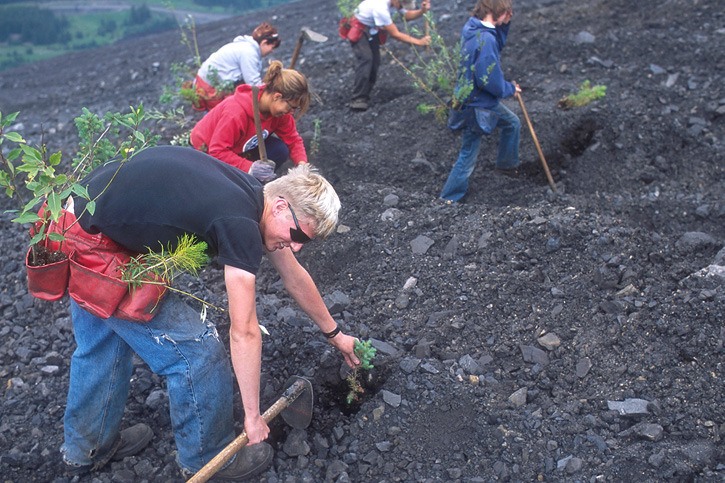The B.C. government has unveiled the latest step in its climate action plan, a one-time $150 million fund for forest rehabilitation and tree planting.
Premier Christy Clark visited a Canfor tree nursery at Prince George Friday to announce the funding, estimating it will provide 3,000 jobs over the next five years in rural communities around the province.
The funds go to the Forest Enhancement Society of B.C., set up a year ago to restore damaged forests, reduce forest fire risk and increase forest carbon capture.
Much of the society’s work so far has been forest fuel removal operations in interface areas around communities. Among the largest projects so far are in the Slocan Valley, the Gold Creek area near Cranbrook and near Williams Lake, where helicopter logging is removing beetle-killed Douglas fir from steep slopes around the community.
On the South Coast, an interface fuel removal project is underway near Whistler.
Jim Snetsinger, who was B.C.’s chief forester during the peak years of the mountain pine beetle outbreak in the B.C. Interior, is now vice-chair of the Forest Enhancement Society. He said in an interview the new fund will enable the society to extend beyond fire protection projects and into more replanting and rehabilitation.
Its first big project to rehabilitate beetle-damaged pine stands is outside Quesnel, where an area around the communities of Nazko and Kluskus is being treated and replanted.
The society takes proposals from communities and funds the ones that fit its criteria. Its next intake of applications is in March.
“We’re looking at areas where the forest industry is no longer interested in going in and harvesting those stands that have lost their ability to carry an economic operation,” Snetsinger said. “We’d be looking at stands that are damaged, and need to be rehabilitated and reforested. And we would go in and work with a partner, and those stands would be cleaned up.”
Since the severe forest fire season of 2003, the province has established two projects for interface fire prevention. One is administered by the Union of B.C. Municipalities and the other is through the First Nations Emergency Services program.
